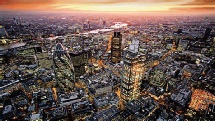






Find Out More Here:
Passivhaus Institut
Passivhaus Trust UK
International Passive House Assoc.
UK Government Trustmark
European Commission

Contact:
11 Mount View
Billericay
Alden Rose
ARCHITECTURAL DESIGN
Essex CM11 1HB

Certified Passive House Consultant
Member of the International Passive House Association
Member of the Passivhaus Trust
enquiries@aldenrose.co.uk
+44 1277 651000
IPHA Membership
ID No. 65104
Copyright 2024 Alden Rose Ltd
Blogs Coming Soon:
Self-

Social Media:
aldenroseltd

Alden Rose Ltd

Blogs
“I have been studying the causes and effects of Climate Change for nearly 10 years from an architectural point of view but the last few years have completely changed me. The more I researched into climate change and the built environment, the more I wanted to understand the details and what we can do to make a difference. The last 18 months or so have been a tough time for me, I studied in every spare moment I had to gain qualifications in Energy Efficiency and received my Government-
As a child of the ‘70s, I have seen changes to the way we live caused by consumerism and corporations, increases in technology and the general pace of life. I admit to being the same as most people, continuing along without considering my actions in a bid to make my life easier.
In the last few years we have seen a vast increase in extreme weather conditions around the world but the 40°C heat of July 2022 has finally affected the UK, with predictions for a yearly event. As a co-
Throughout the years I have researched and studied, I have seen what other countries are doing to combat Climate Change and seen how far behind the UK is in adopting new methods, techniques and building standards. We have a vast shortage of skills, manufacturers and supply chains which needs to change.
I believe that education should be free to everyone and have written a series of blogs to explain Climate Change and what we need to do that I hope will help raise awareness. I have also written some other industry related news and articles and I hope
you find them useful. More blogs are on their way.
Thank you for reading!”
Keeley Harris -
(vineyard owner and costume maker!)
Building Control Explained
Energy Saving Tips
Starting a Vineyard -
vineyard: Woodvalley Vineyards

Woodvalley Vineyards Ltd


Scientists have been talking about global warming for decades, warning that we were heading towards a climate crisis. As the term Global Warming became Climate Change and now recently Climate Crisis we have simplified the changes to our planet and explain the differences between Carbon Zero, Net Zero and Carbon Emissions and discussed what we can all do to our individual lives to help repair the planet for our future generations
The Climate Crisis Explained


The buildings we live and work in contribute to over 39% of the country’s carbon emissions. From plugging in a phone to recharge it, taking a hot shower or turning up the heating to keep warm, we are increasingly burning fossil fuels that are sending carbon into the atmosphere where it can’t escape. In this Blog we explain the role our built environment is playing in the Climate Crisis, the effects of our daily lives and what will happen if we continue on the same path
Our Built Environment Explained


The world is fast adopting the Passivhaus Standards in all buildings, old and new, to create the optimum healthy living environment and help reduce our carbon emissions from the built environment. The Passivhaus Principles have been tried and tested around the world for over 30 years creating ultra-
Passivhaus Explained

The Paris Agreement is a legally binding contract that requires all countries to decarbonise by 2050. The UK has predicted that over 25 million of our current homes will still be in use at this time. Without a Retrofit, these homes will still emit carbon at their current rate putting the UK in default of the Agreement. Every homeowner and building owner needs to Retrofit their property by 2050 to reduce carbon emissions and energy bills. With a Government-
Retrofit Explained -

As energy bills soar to the highest levels ever recorded, we take a more detailed look at how to upgrade our existing buildings. Retrofit measures are expensive but don’t need to be carried out all at once, they can be done in a phased approach over the next 20 years but knowing what you should be doing and in which order to do it can be a minefield. We detail the work required, the options available and the correct sequencing it should be done
Retrofit Explained -


France has recently implemented laws for all commercial buildings to have solar panels or green roofs by 2024, and Europe has the NZEB building regulations for many years. UK building standards are falling behind the rest of the world as other countries adopt the Passivhaus Standards as a mandatory building regulation for all new construction. Find out what the rest of the world is up to, and see some of the amazing projects that are happening in Chile, Japan, China and India
The Global Scale Explained

The new Biodiversity Net Gain planning laws are due to come into force in 2024. Initially for developments of over 10 homes, we will see tree lined streets, ponds on street corners and upgrades to Green Belts, managed for a minimum of 30 years. The approved expansion of Pinewood Studios comes with a new National Park to offset the biodiversity removed from the development. See how our new planning laws are going to rethink the housing developments of old
Biodiversity Net Gain Explained

Obtaining planning approval for your renovation and extension works can be daunting to many. Finding out whether your proposal needs planning permission and which application you need can be confusing. Here we explain the system from applications to approvals….
The Planning System Explained

“Education should be free for all” - Alden Rose
MMCs -



After the Industrial Revolution of the 18th Century, the UK saw a housing boom larger than any other country. Cities, towns and suburbs were created to make way for the increased wealth and population growth. Today, more than 20% of the UK’s homes were built over 100 years ago, many are Listed Buildings or in Conservation Areas, but many have few constraints and homeowners are unaware that they should be using specific materials in renovations
Retrofitting Traditional and Historical Buildings





